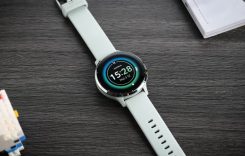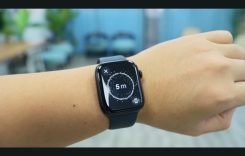In the ever-evolving world of smartphones, Google’s Pixel series has always managed to stand out. The Google Pixel 4, released in October 2019, is no exception. Packed with innovative features and powered by Google’s signature AI technology, this flagship phone has garnered significant attention in the mobile industry. In this review, we will delve into the Google Pixel 4, exploring its design, display, camera capabilities, performance, software, and more, while also considering its relevance in today’s fast-paced smartphone market.
Design and Build Quality


The Google Pixel 4 offers a sleek and minimalist design, showcasing a Gorilla Glass back panel that feels premium to the touch. The device is available in three striking colors: Just Black, Clearly White, and Oh So Orange. The rear camera module, while slightly bulky, houses a dual-camera setup that provides a distinctive look. The phone’s form factor is comfortable to hold, and the build quality is solid. However, the absence of a fingerprint sensor on the rear may disappoint some users.
Display

One of the key highlights of the Google Pixel 4 is its display. The device features a 5.7-inch OLED display with a Full HD+ resolution. The screen offers vibrant colors and deep blacks, making it a treat for multimedia consumption. The 90Hz refresh rate enhances the overall user experience, making interactions smoother and more responsive. It’s worth noting that the battery life might take a hit when the 90Hz display is enabled, but the option to switch between 60Hz and 90Hz provides a good compromise between performance and battery efficiency.
Camera Capabilities

The Google Pixel 4’s camera capabilities continue to be a strong suit. The dual-camera setup on the rear consists of a 12.2 MP primary sensor and a 16 MP telephoto lens. Google’s image processing algorithms shine through, producing stunning photos with exceptional dynamic range and sharpness. Night Sight, Google’s low-light photography mode, is one of the best in the industry, capturing impressive details even in challenging lighting conditions. The phone also introduces the astrophotography mode, allowing users to capture stunning night sky shots. The 8 MP front-facing camera is equally capable, ensuring high-quality selfies and video calls.
Performance
Under the hood, the Google Pixel 4 is powered by the Qualcomm Snapdragon 855 chipset and comes with 6GB of RAM. While these specifications were competitive at the time of its release, they may seem a bit dated in the ever-evolving smartphone landscape. Nonetheless, the device handles day-to-day tasks with ease, offering a snappy and responsive user experience. Gaming performance is also respectable, although it may not be the first choice for heavy gamers. The 2800mAh battery capacity is on the smaller side, and while it can last a full day with moderate use, it might struggle under heavy usage.
Software
The Google Pixel 4 runs on a clean and pure Android experience. It is one of the first devices to receive Android updates and security patches, ensuring users have access to the latest features and improvements promptly. Google’s commitment to software updates and support makes the Pixel series an attractive choice for Android enthusiasts.
Unique Features
The Pixel 4 introduces several unique features, such as Motion Sense, which utilizes a radar sensor to enable touchless gestures for controlling the phone. While this feature has potential, it’s not fully realized and may feel gimmicky to some users. The phone also features Face Unlock, which is fast and reliable, but lacks the added security of a fingerprint sensor.
Conclusion
The Google Pixel 4 is a smartphone that excels in several key areas, such as camera performance, clean software, and a stunning display. However, it does have its shortcomings, including battery life and the absence of a fingerprint sensor. In the fast-paced world of smartphones, the Pixel 4, released in 2019, faces tough competition from more recent models with upgraded hardware and features. While it may not be the latest and greatest, it still offers a compelling package for users who prioritize photography and a pure Android experience. If you can overlook its limitations, the Google Pixel 4 remains a solid choice.
In summary, the Google Pixel 4 stands as a testament to Google’s commitment to smartphone innovation, albeit in a market where staying ahead of the curve is a challenge. Its exceptional camera capabilities, clean software experience, and striking display make it a noteworthy device, but potential buyers should carefully consider their priorities and the availability of more recent alternatives before making a purchase decision.









